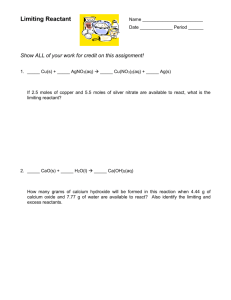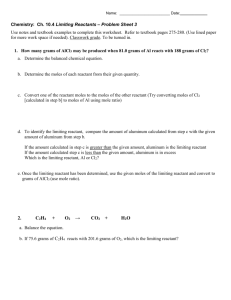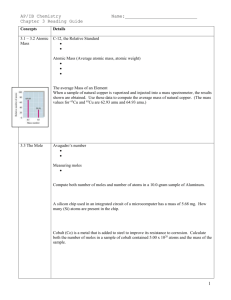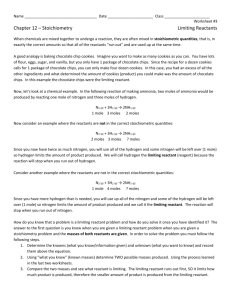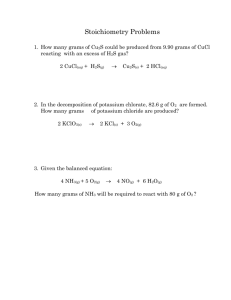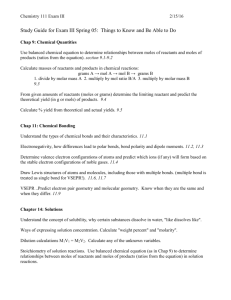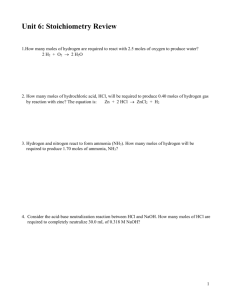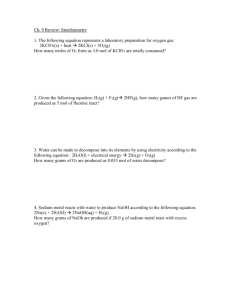Name______________________Per_____ LIMITING REACTANT
advertisement
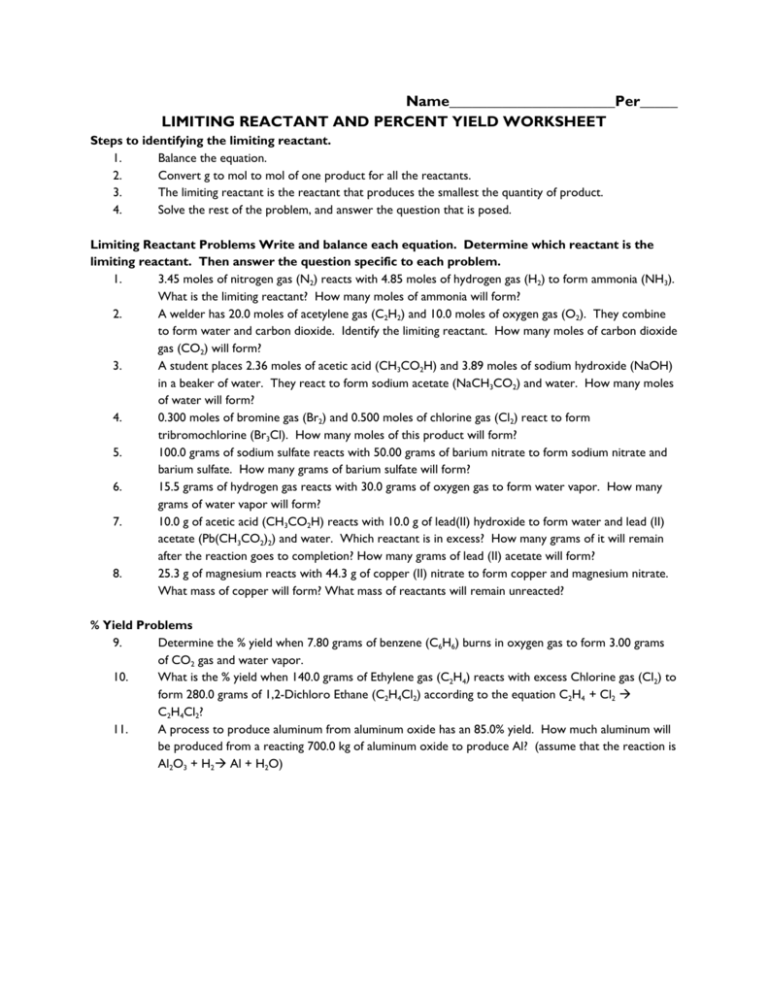
Name______________________Per_____ LIMITING REACTANT AND PERCENT YIELD WORKSHEET Steps to identifying the limiting reactant. 1. Balance the equation. 2. Convert g to mol to mol of one product for all the reactants. 3. The limiting reactant is the reactant that produces the smallest the quantity of product. 4. Solve the rest of the problem, and answer the question that is posed. Limiting Reactant Problems Write and balance each equation. Determine which reactant is the limiting reactant. Then answer the question specific to each problem. 1. 3.45 moles of nitrogen gas (N2) reacts with 4.85 moles of hydrogen gas (H2) to form ammonia (NH3). What is the limiting reactant? How many moles of ammonia will form? 2. A welder has 20.0 moles of acetylene gas (C2H2) and 10.0 moles of oxygen gas (O2). They combine to form water and carbon dioxide. Identify the limiting reactant. How many moles of carbon dioxide gas (CO2) will form? 3. A student places 2.36 moles of acetic acid (CH3CO2H) and 3.89 moles of sodium hydroxide (NaOH) in a beaker of water. They react to form sodium acetate (NaCH3CO2) and water. How many moles of water will form? 4. 0.300 moles of bromine gas (Br2) and 0.500 moles of chlorine gas (Cl2) react to form tribromochlorine (Br3Cl). How many moles of this product will form? 5. 100.0 grams of sodium sulfate reacts with 50.00 grams of barium nitrate to form sodium nitrate and barium sulfate. How many grams of barium sulfate will form? 6. 15.5 grams of hydrogen gas reacts with 30.0 grams of oxygen gas to form water vapor. How many grams of water vapor will form? 7. 10.0 g of acetic acid (CH3CO2H) reacts with 10.0 g of lead(II) hydroxide to form water and lead (II) acetate (Pb(CH3CO2)2) and water. Which reactant is in excess? How many grams of it will remain after the reaction goes to completion? How many grams of lead (II) acetate will form? 8. 25.3 g of magnesium reacts with 44.3 g of copper (II) nitrate to form copper and magnesium nitrate. What mass of copper will form? What mass of reactants will remain unreacted? % Yield Problems 9. Determine the % yield when 7.80 grams of benzene (C6H6) burns in oxygen gas to form 3.00 grams of CO2 gas and water vapor. 10. What is the % yield when 140.0 grams of Ethylene gas (C2H4) reacts with excess Chlorine gas (Cl2) to form 280.0 grams of 1,2-Dichloro Ethane (C2H4Cl2) according to the equation C2H4 + Cl2 Æ C2H4Cl2? 11. A process to produce aluminum from aluminum oxide has an 85.0% yield. How much aluminum will be produced from a reacting 700.0 kg of aluminum oxide to produce Al? (assume that the reaction is Al2O3 + H2Æ Al + H2O)
